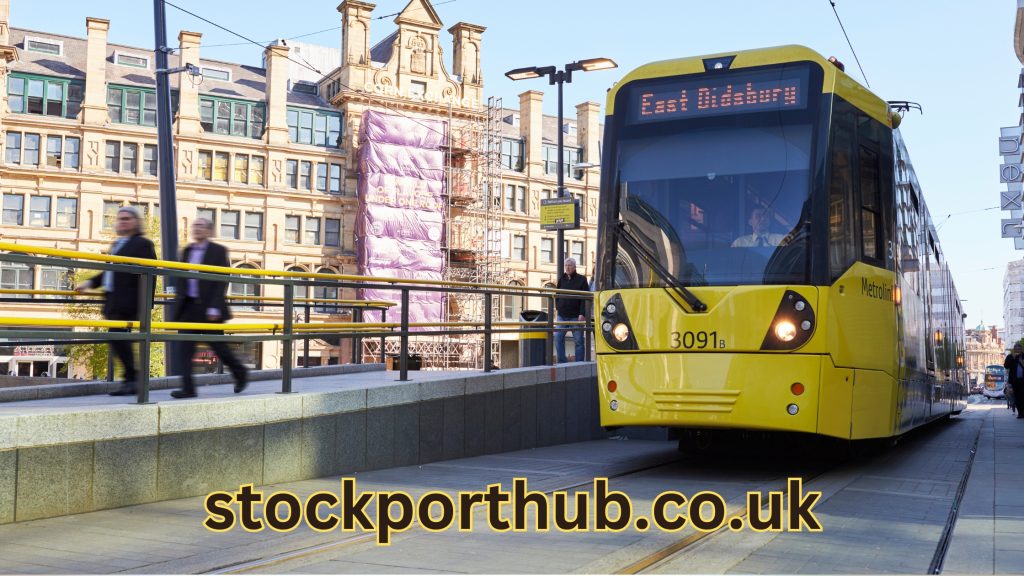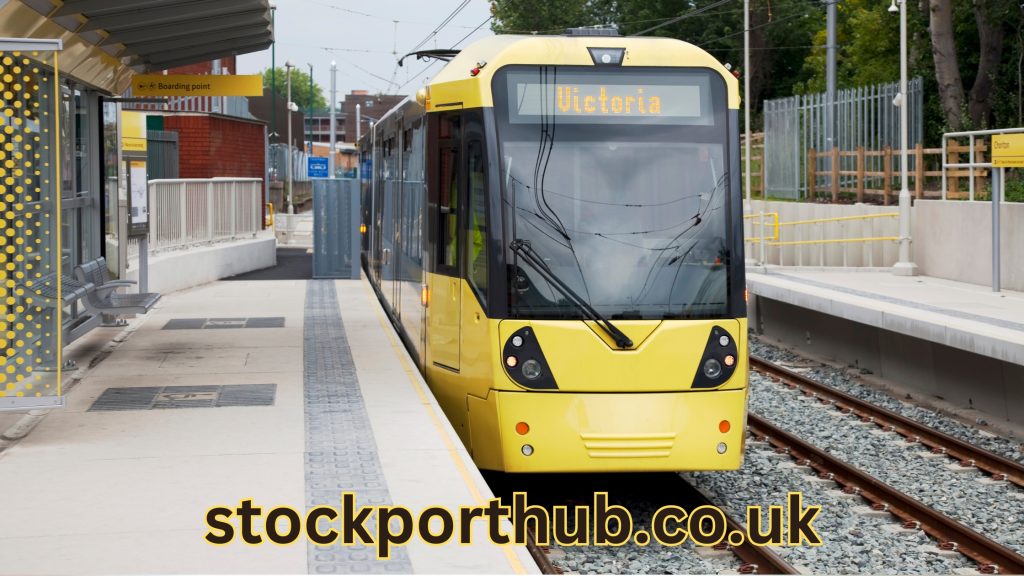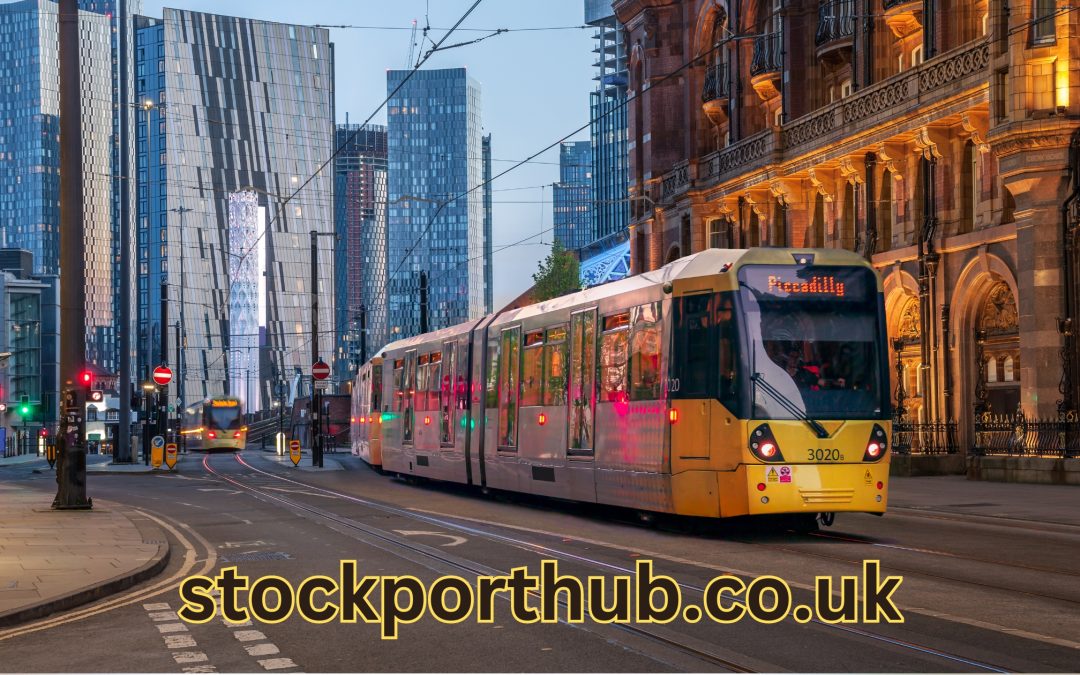Stockport and its Relation to Tramways
Falling under the spotlight is the hot topic of Stockport’s connection to tramways, largely driven by the campaign “Next Stop Stockport”. The aim of this campaign, as emphasized by the Council Leader Mark Hunter, is to link Stockport to Manchester Airport and East Didsbury. It’s a call on Greater Manchester Combined Authority to take action after years of hopeful waiting.
The Stockport Rail Strategy Draft report highlights some crucial considerations concerning the reintroduction of tramways. An extensive project is necessary for Metrolink conversion. It’s a task that not only requires substantial funding but also could potentially disrupt existing Sheffield-bound rail networks, pushing them towards Hazel Grove or Guide Bridge.
The Stockport Rail Strategy Draft report intricately dives into possible alternative routes to Stockport town centre. It details how previous rail alignments are, unfortunately, no longer viable due to obstructions. For example, the East Didsbury to the former Cheadle Heath and Stockport Tiviot Dale stations’ rail alignments have been removed. This removal means creating an entirely new alignment—fiendishly costly and time exhaustive in planning and development stages.
A plan in the pipeline includes the construction of a new tunnel, believed to run under parts of Mercian Way and King Street West. Visualization shows travel between Booth Street and the railway station, although the exact location remains to be confirmed. It’s a robust, albeit significant, project to increase accessibility to the town via the tram network.
Furthermore, Mancunians are not oblivious towards Stockport Council’s campaigns promoting an extension of the Metrolink to the town. An illustration of their desire for increased public transport options in Stockport, a move that enhances not only intra-town communications, but also connects it more efficiently with Manchester’s thriving hubs.
Unfortunately, promises and assurances of Metrolink’s extension to Stockport are yet to come to fruition, leading to growing frustration amongst residents. Delivering the business case that makes the project feasible must remain a priority. At the moment, it seems, the tramways remain a dotted line on a map, marking out a potential future for the Stockport tram system.
Understanding GM Transport Strategy 2040 Delivery Plan
The Implication for Stockport
As Stockport grows, the necessity for enhanced public transport access becomes increasingly critical. We are here to discuss the Greater Manchester Transport Strategy 2040 Delivery Plan and its implications for Stockport. The crux of this strategy revolves around substantial improvements to connectivity across the region, which includes the inclusion of Stockport in the Manchester Metrolink extension plans.
Stockport Council, as a key player in this equation, plays a substantial role. The council is well aware of the pending Metrolink extension, which would transform the public transport profile of the region. According to the Stockport Rail Strategy Draft report, the presence of the Metrolink in Stockport promises to bring remarkable benefits such as reduced travel times and improved accessibility to the central districts of Greater Manchester, such as East Didsbury and Manchester airport.
In an ambitious move, one element of the strategy proposes construction of a new tunnel running under parts of Mercian Way and King Street West. Despite the exact location remaining undetermined, this step connotes success, a potential milestone towards a unified and extensive transport network. It helps materialise the dream of trams zipping under the city, linking all the vital nodes.
The plan goes beyond trams. Prospects are brimming for enhanced accessibility, with initiatives promising better access to cyclists and pedestrians via the Greek Street Bridge structure. Simultaneously, the property infrastructure seems to harmonise with the plan. Prospective residents looking for homes in Stockport can expect homes with landscaped gardens and sufficient parking spaces, reducing the reliance on additional parking areas in the city.
In essence, the GM Transport Strategy is set to redefine public transport in Stockport, with the Manchester Metrolink extension being an integral part. And while initial impacts might include temporary disruptions like closure of the Armoury roundabout, the long-term benefits point towards a robust, interconnected, and easily accessible transport skeleton in Stockport. It is this foresight that keeps the city’s momentum alive, despite the hurdles it encounters along the way. After all, every remarkable journey must face its own set of challenges. The ambition of Stockport lies duly noted in its persistent march towards a tram-friendly future.
Stockport’s Position in Current Public Transport Discussions
This section delves into Stockport’s stance amidst the ongoing discussions surrounding public transport enhancements. Place your attention on two key aspects; the role of trams in Stockport’s public transport and the implications of the Stockport Tram-Train Strategy.
The Role of Trams in Stockport’s Public Transport
Trams bear immense potential in redefining Stockport’s public transport framework. Infusion of trams into Stockport’s transport system isn’t just a hypothetical discussion anymore; it aligns with the “Next Stop Stockport” campaign that envisions trams connecting Stockport to Manchester Airport and East Didsbury. To put it into context, trams promise reduced travel time and enhanced accessibility to the city’s core districts. The introduction of trams would mean delegating major communication routes to this medium, which, in the long run, promises a seamless, interconnected web of transport options.
Stockport Tram-Train Strategy and its Impact
Perspective shifts to the Stockport Tram-Train Strategy when debating the possible outcomes of infusing trams into the city’s transport network. Flick right open onto page 47 of the Stockport Rail Strategy Draft Report, and you’ll come across an alternative route to access Stockport town centre. This route shakes hands with discussions on the Metrolink reel, leading us to the crux – a possible Metrolink conversion of the Bredbury line.
The implications of such a project are grand. It would require substantial funding, tug along potential disruptions to existing rail networks but, most importantly, it gives all Sheffield bound trains a one way ticket through Hazel Grove or Guide Bridge, forever.
Yet, Stockport Council shows unwavering support towards these proposals, underscoring the importance of long-term benefits of establishing robust, interconnected, and easily accessible transport network in Stockport over potential short-term disruptions. The planned Manchester Metrolink extension signifies a path towards this goal, leading the tram tracks towards a well-integrated public transport system in Stockport.

The Future of Tramways in Stockport
Public transport development in Stockport, with a particular focus on tramways, has gained momentum in recent years. Spearheaded by the Stockport Council, the town’s transport scenario is poised for significant changes.
Stockport and HS2, NPR-Related Developments
As Stockport prepares for its integration with the High-Speed 2 (HS2) rail and Northern Powerhouse Rail (NPR) network, it’s important to acknowledge the potential changes that these connections could prompt. Such developments form a crucial part of Stockport’s ambitious plans to improve connectivity, and rightfully so. After all, NPR aims to dramatically improve transport connections between the north’s key cities, and HS2 presents an unprecedented opportunity to bolster the town’s links with the wider region.
Stockport Council’s transport strategy aspires to make efficient use of these upcoming rail developments. Utilising them for integrating the Manchester Metrolink extension further into Stockport’s public transport system forms a large part of this vision. The plans also highlight the significance of tramways in the town’s public transport context.
The Potential Developments for Tramways in Stockport
The proposal of extending the Manchester Metrolink to Stockport holds immense potential. For instance, think of city-dwellers easily zipping across town, accessing vital areas faster, and making suburban dwellers less reliant on private cars. From easing congestion to reducing overall travel time, the benefits of seamless tram connections can’t be overemphasised.
The Draft Stockport Rail Strategy advocates for the Metrolink extension, foreseeing it as a major project akin to the system’s initial construction. The Strategy posits that the Metrolink conversion could bring about significant changes to the wider rail network, encouraging all Sheffield-bound trains to pass through Hazel Grove or Guide Bridge.
But it’s not just the larger picture that requires attention. Considerations on a granular level, including the alignment of new and pre-existing rail lines, integrating them with tram networks, and improving the city’s overall transport experience, are equally essential.
The aspiration of a smooth, well-oiled public transport system is closer to becoming a reality with the extension of Manchester Metrolink to Stockport. Despite the inherent challenges and potential disruptions to the current network, Stockport’s town centre promises to become more accessible. And greater accessibility can only mean a brighter future for the town and its inhabitants.
Public Reactions towards Tramway Proposals in Stockport
Public sentiment plays a crucial role in the implementation of major infrastructure projects such as the proposed Manchester Metrolink extension in Stockport. A deeper look into various pubic discussions, as seen on credible platforms like railforums.co.uk, offers a sense of the community’s perspective on the tram plans.
Primarily, it becomes apparent that public reaction is mixed, with some expressing concern over the impact on freight trains. Specifically, worries are voiced about the feasibility of integrating a frequent tram service with existing freight train schedules on the Stockport to Baguley line. These concerns come from an understanding that a major project like the Metrolink conversion, as indicated in the Stockport Rail Strategy Draft Report 2020, would have significant implications for the broader rail network.
On the optimistic side, many residents highlight the potential improvement in public transport in areas such as East Didsbury and the southern edges of Manchester. Enthusiasts perceive the proposed route as a simple and efficient way to access Stockport town centre. They stress that while the previous rail alignments seem obliterated, reestablishment is feasible but admittedly a costly process.
There’s also an emerging sentiment about the need for a direct Metrolink service between Manchester and Stockport. Residents voice the potential such an addition would bring, ensuring better connectivity and thereby further strengthening the Stockport’s public transport network.
As stewards of the town’s development, Stockport Council is instrumental in addressing these concerns, channelling the enthusiasm, and transforming residents’ desires into plans. The council promotes the potential benefits, underlining how the Manchester Metrolink extension can ensure a comprehensive, interconnected, and easily accessible transport system.
The promise of reduced travel times, enhanced accessibility, and overall improvement in the city experience to Stockport residents and visitors alike, is unquestionable. Weighing these benefits against potential disruptions and cost implications is crucial in steering discussions, making decisions and ultimately winning public support for the ambitious infrastructure project.
Overall, the narrative suggests a need for an open dialogue between authorities, including Stockport Council, and the public. Constructive exchange of ideas can help gauge concerns, align goals, build consensus, and foster a sense of ownership that will be invaluable as the Stockport tram project advances.

Benefits and Challenges of Implementing Tramways in Stockport
As we delve into the ambitious vision of Stockport’s transportation system, it’s crucial to shed light on both the potential benefits and challenges around the proposed Manchester Metrolink extension and the broader reintroduction of tramways in Stockport.
Prospected Benefits of the Tram Implementation
The allure behind the Manchester Metrolink extension lies in its promise to greatly enhance overall public transport accessibility within Stockport. By seamlessly integrating the town with larger networks, the implementation of tramways promises to dramatically cut travel times and open up new travel routes, which could potentially connect residents to key areas like Manchester Airport and East Didsbury.
An interconnected and efficient transport network, such as the proposed Metrolink, can also serve as a powerful economic tool. Allowing more convenient and frequent travel, it bolsters local businesses and promotes tourism by enabling diverse groups of people to explore Stockport with ease. It directly reflects the Stockport Council’s commitment to fostering a vibrant, connected community.
Moreover, an operational tram network significantly contributes to reducing congestion on the roads, subsequently lessening environmental pollution. It also supports active journeys, facilitating north-south cycling and walking routes to stations and new developments, such as the Eco Business Park on Bird Hall Lane.
Anticipated Challenges in Tram Implementation
However, the aspirations for a tram-connected Stockport also invite some profound challenges. The biggest of these perhaps lie in the logistics of physically reintroducing tramways. For instance, the Stockport Rail Strategy Draft Report highlights issues surrounding the alignment of the new rail with the existing ones – a critical and costly process that remains to be resolved.
Also, according to the same report, the proposed Metrolink conversion will entail a major construction project, with implications that could potentially affect the broader rail network. Re-routing of existing Sheffield-bound trains may become inevitable, thereby requiring them to pass through Hazel Grove or Guide Bridge.
Several concerns are also tied to the scheduled freights, since the Stockport to Baguley line is heavily utilised by freight trains. Some fear that the frequent interval tram service might spurn complications that presently seem impenetrable.
Conclusion
We’ve delved deep into the prospects of tram service in Stockport, from its promising benefits to potential challenges. The “Next Stop Stockport” campaign and the Stockport Tram-Train Strategy depict a future with a robust tram network, enhancing access to key areas while reducing travel times. The proposed Manchester Metrolink extension is a significant part of this vision, promising improved public transport and less congestion. However, we can’t overlook the hurdles, from aligning new rail with existing infrastructure to potential disruptions to freight train schedules. Stockport Council’s role is vital in addressing these concerns and fostering public support. Despite mixed community sentiments, there’s a general optimism about improved accessibility and connectivity. It’s clear that the tramway could be a game-changer for Stockport, but its implementation will require careful planning, substantial funding, and a shared vision for a more connected Stockport.
Stephen F is the publisher of this website, he is a long term resident of Stockport. Over the years he has explored every area within Stockport from the Merseyway Shopping Centre to the Etherow Country Park trails.
He can often be found on a lazy Saturday morning frequenting one of Stockport's many coffee shops sipping his favourite latte.
One of his big passions is to go for long country walks with his pet golden retriever Lottie.
One thing is certain he knows Stockport!

